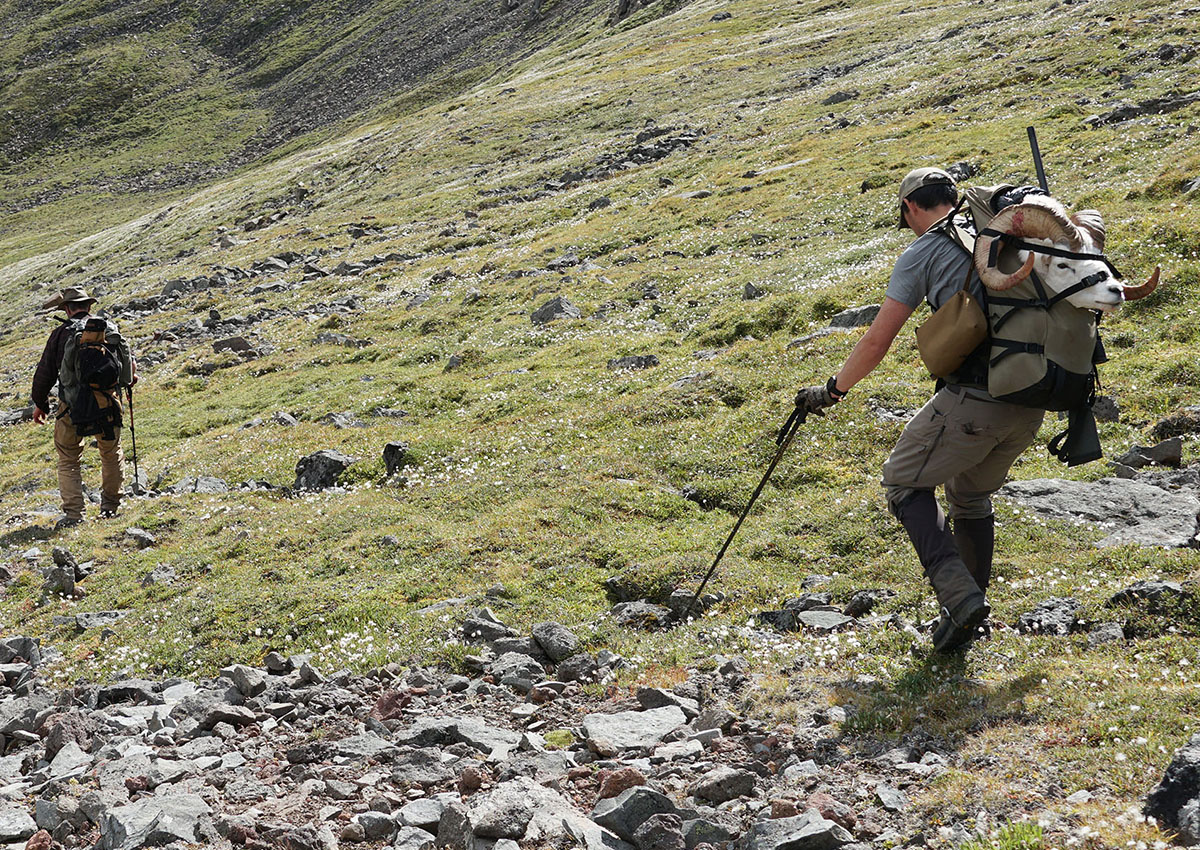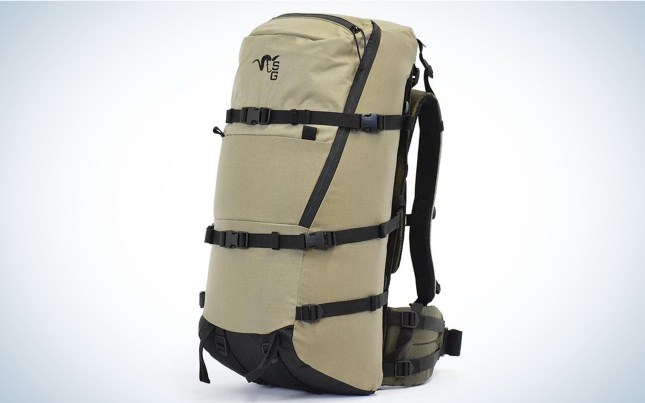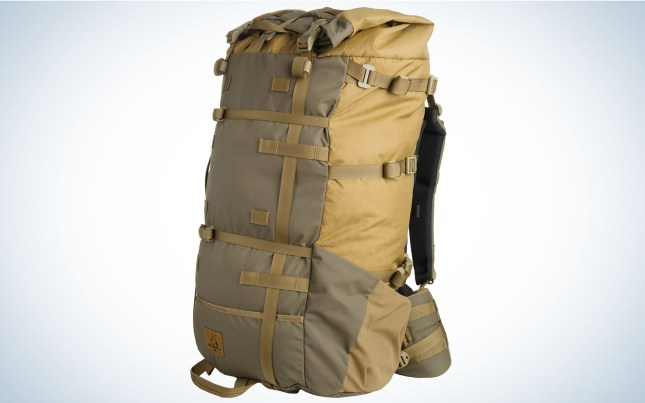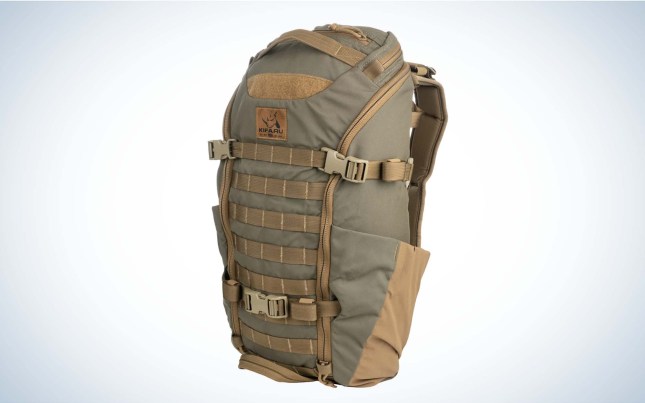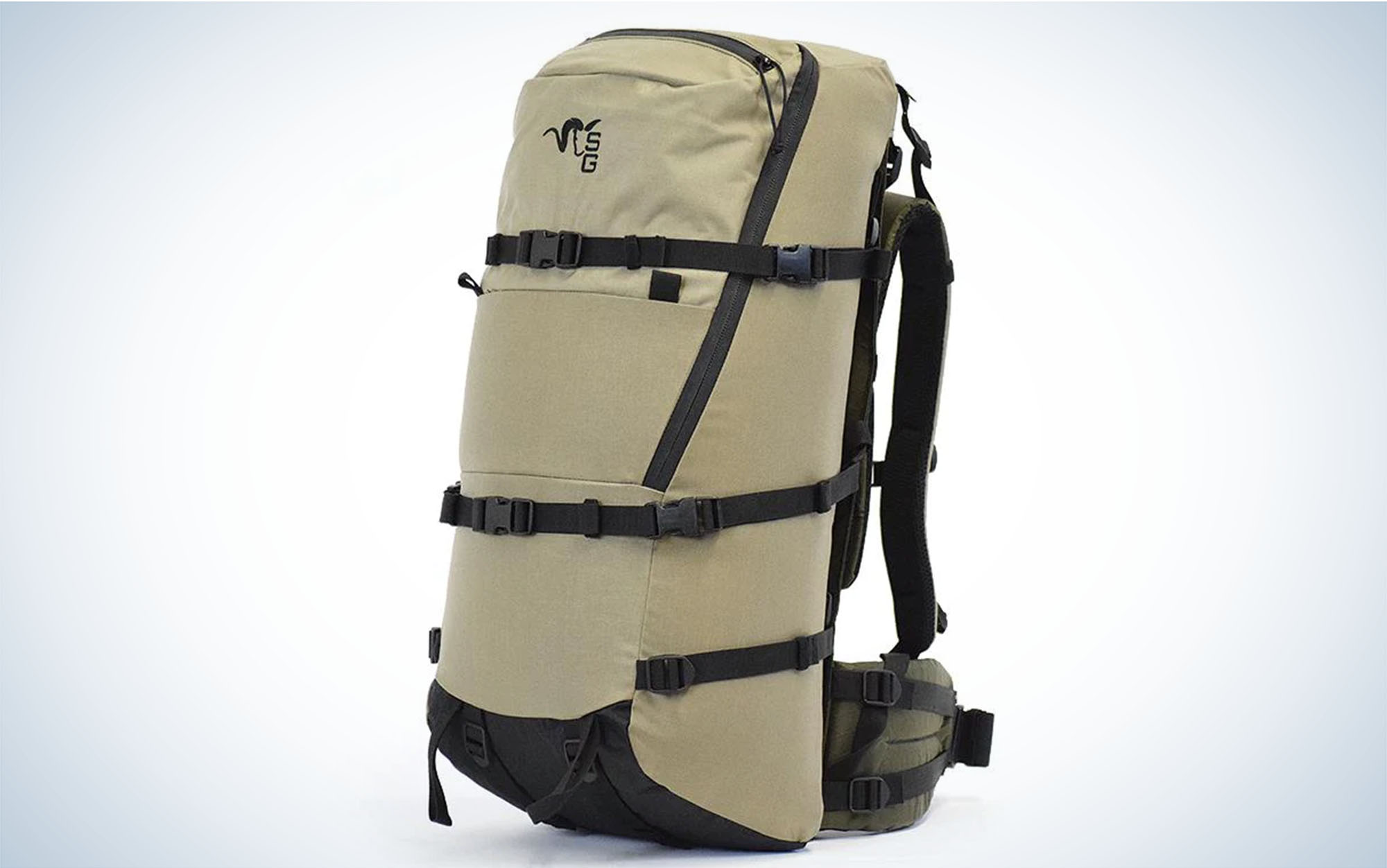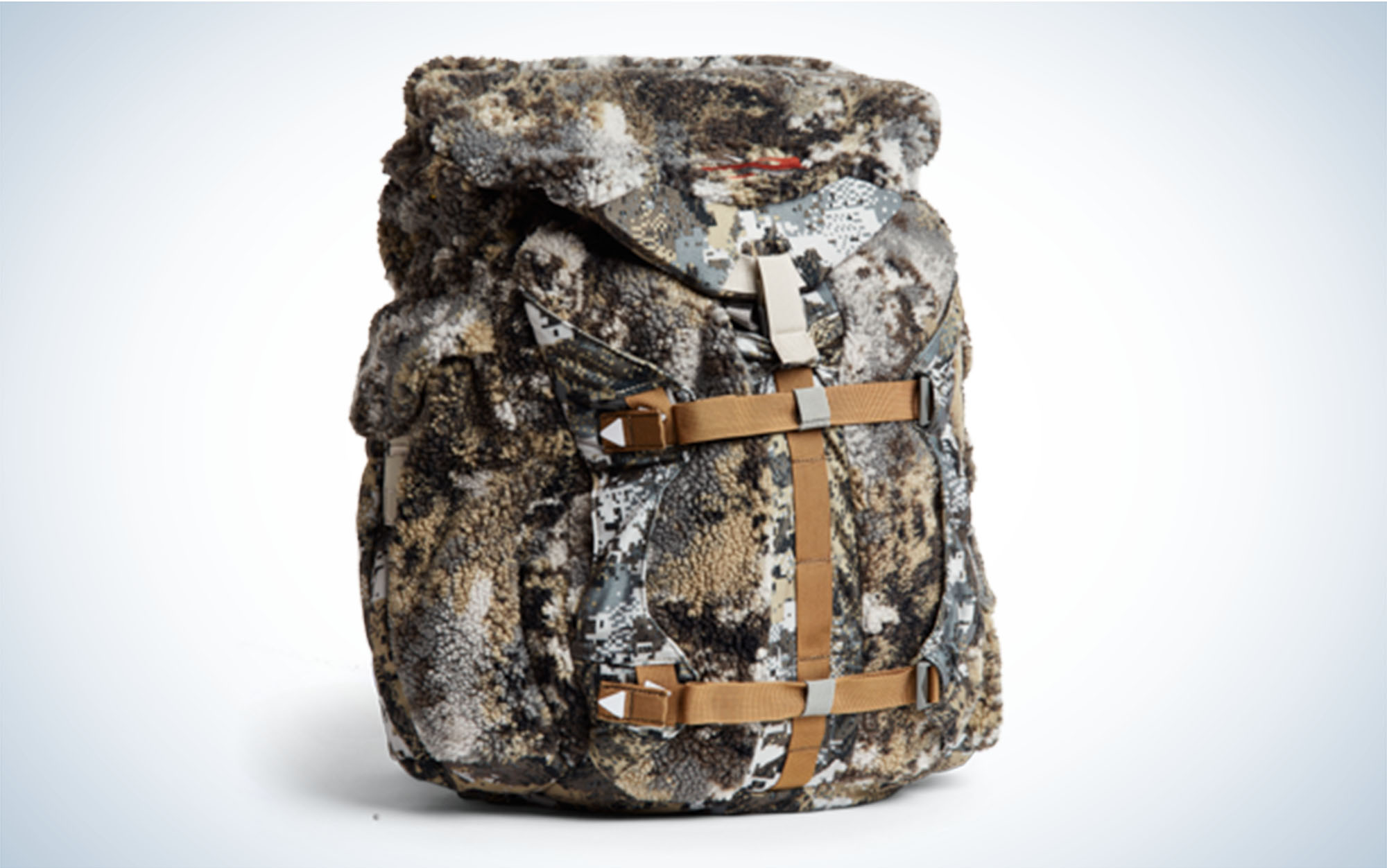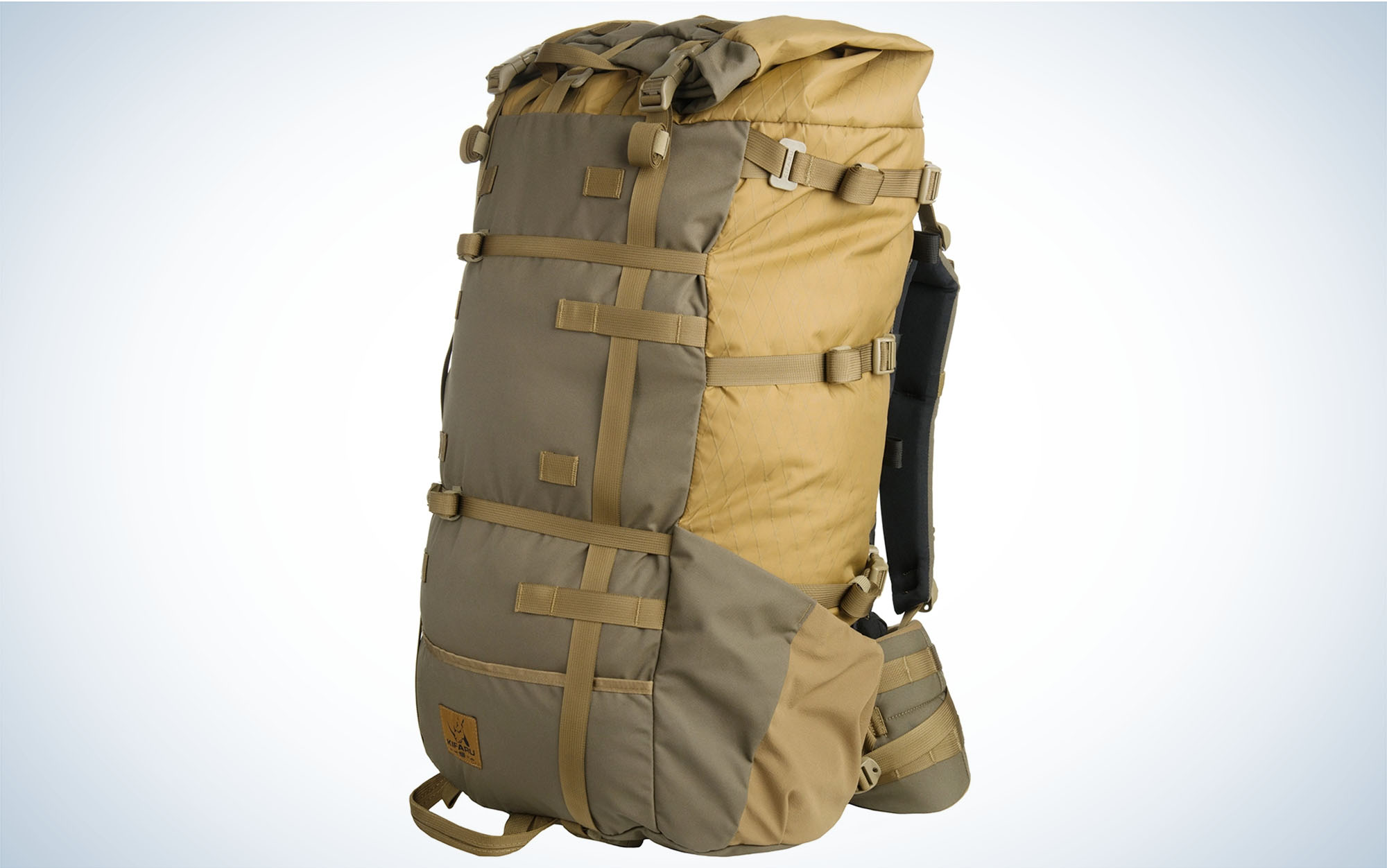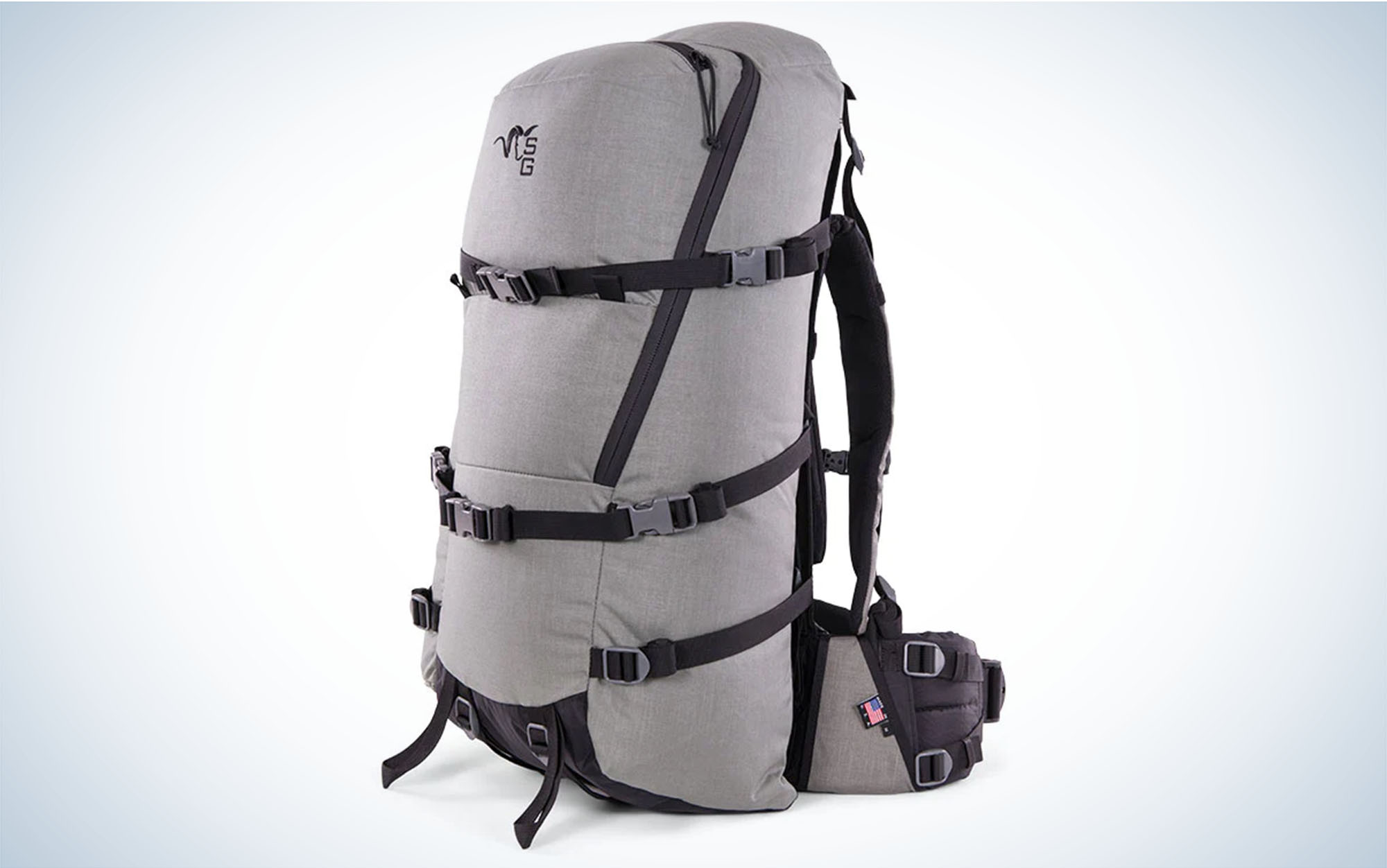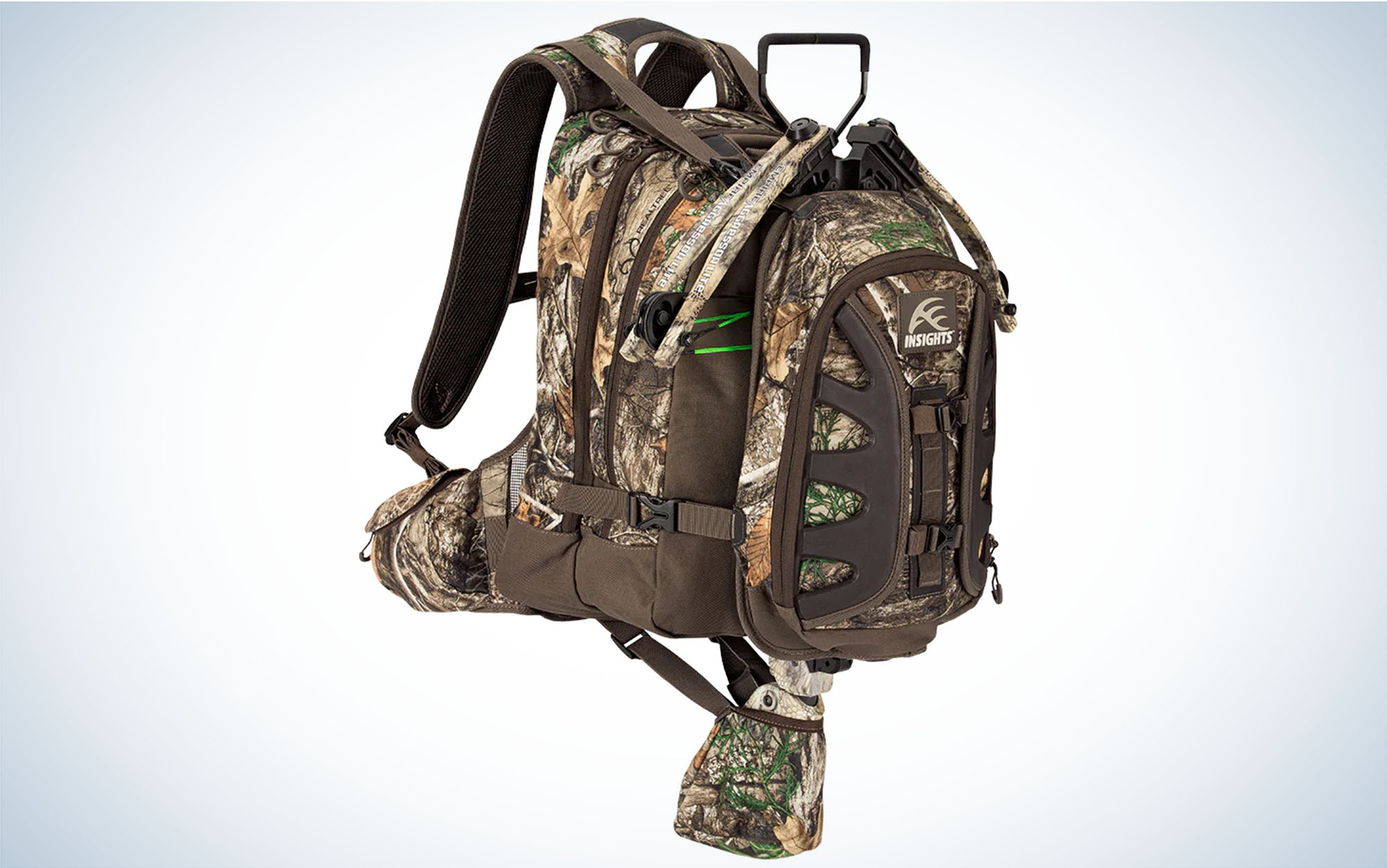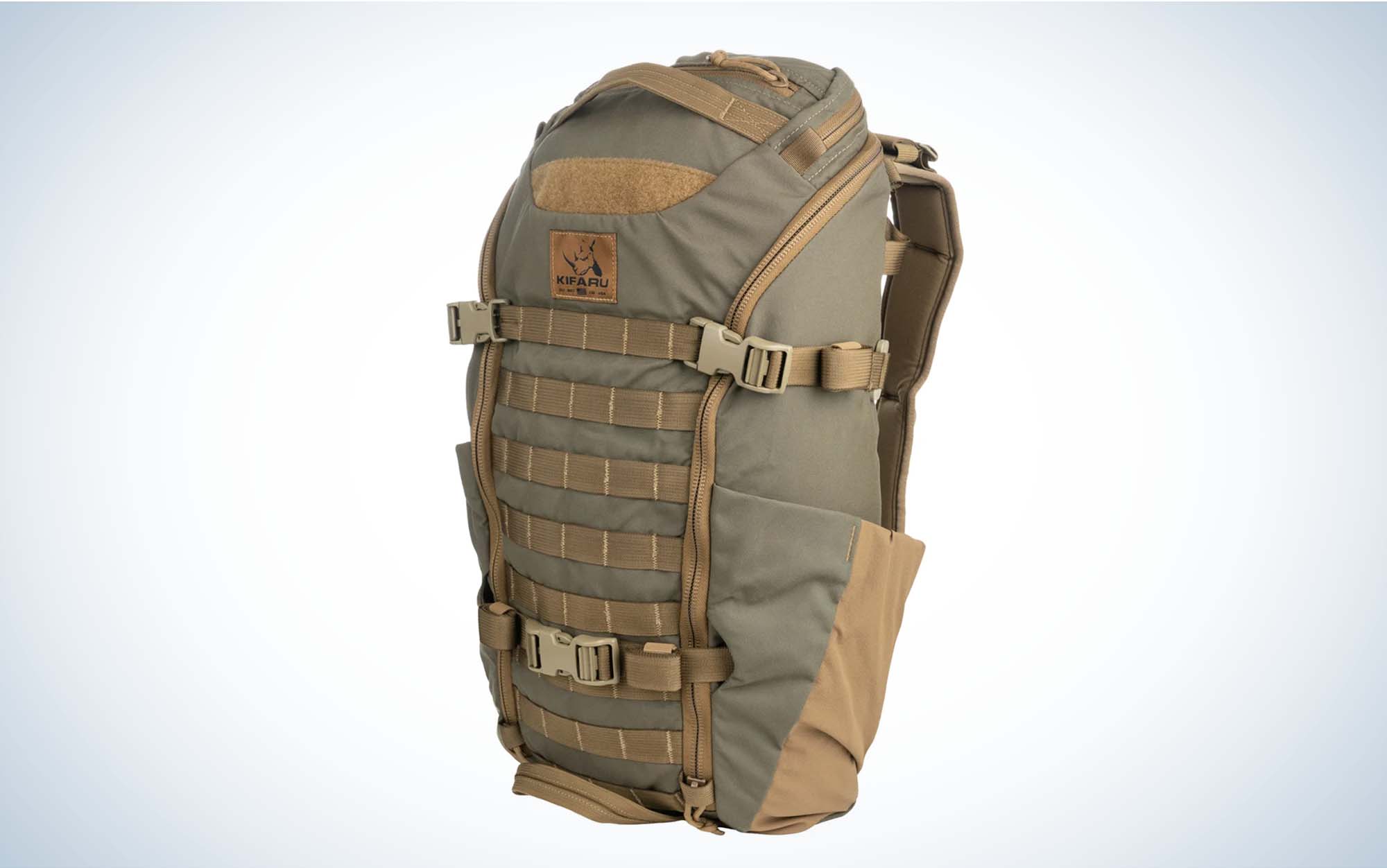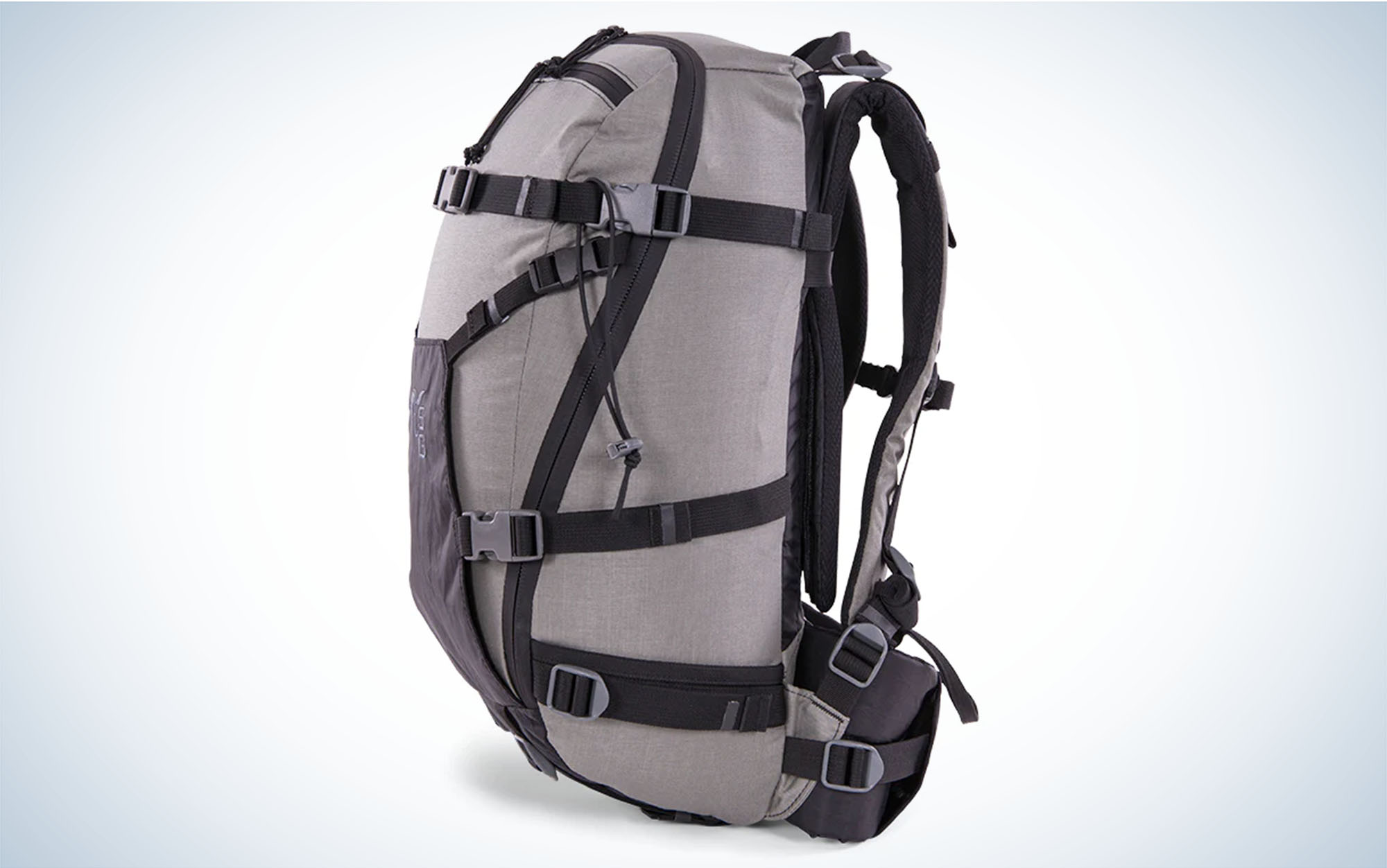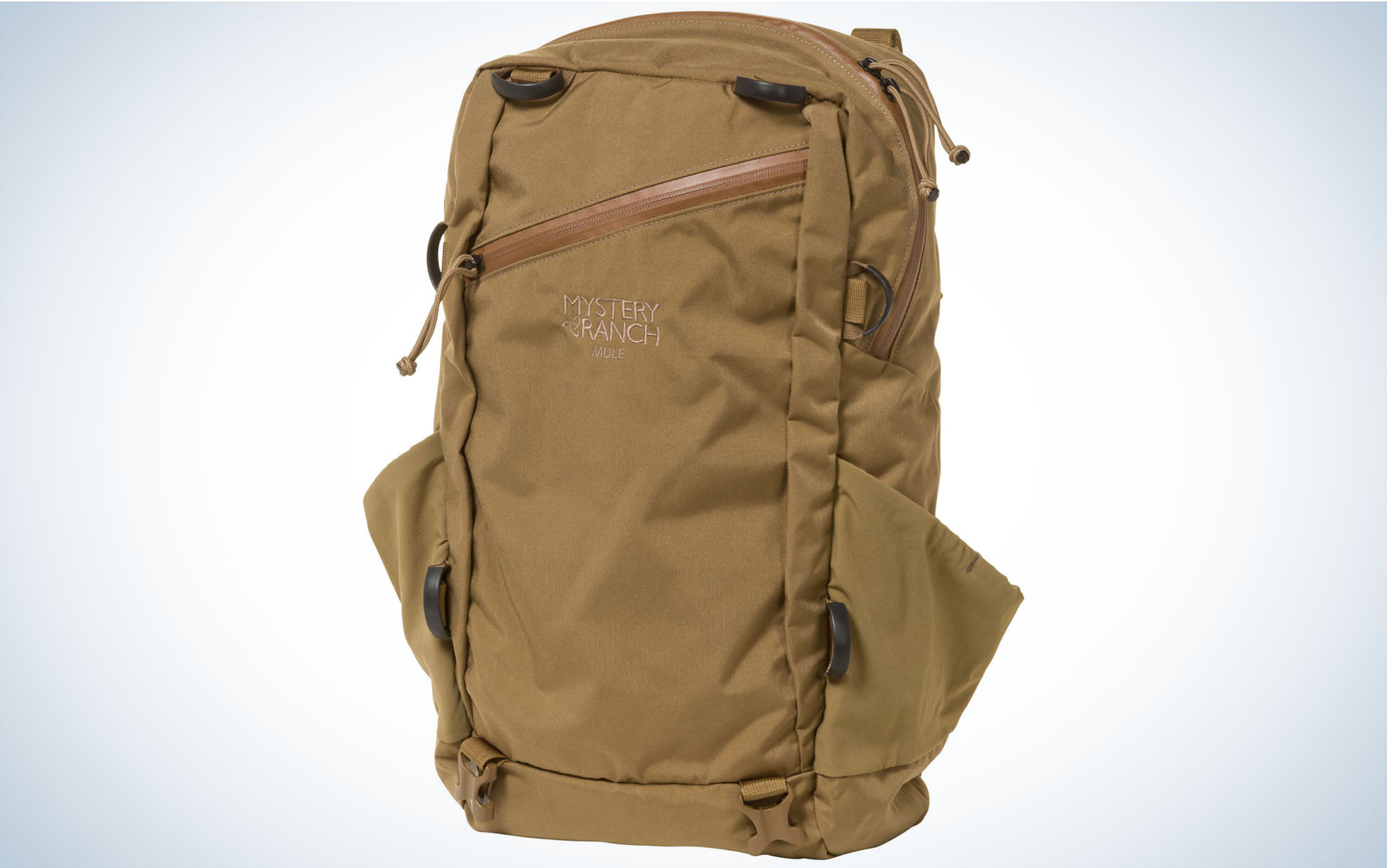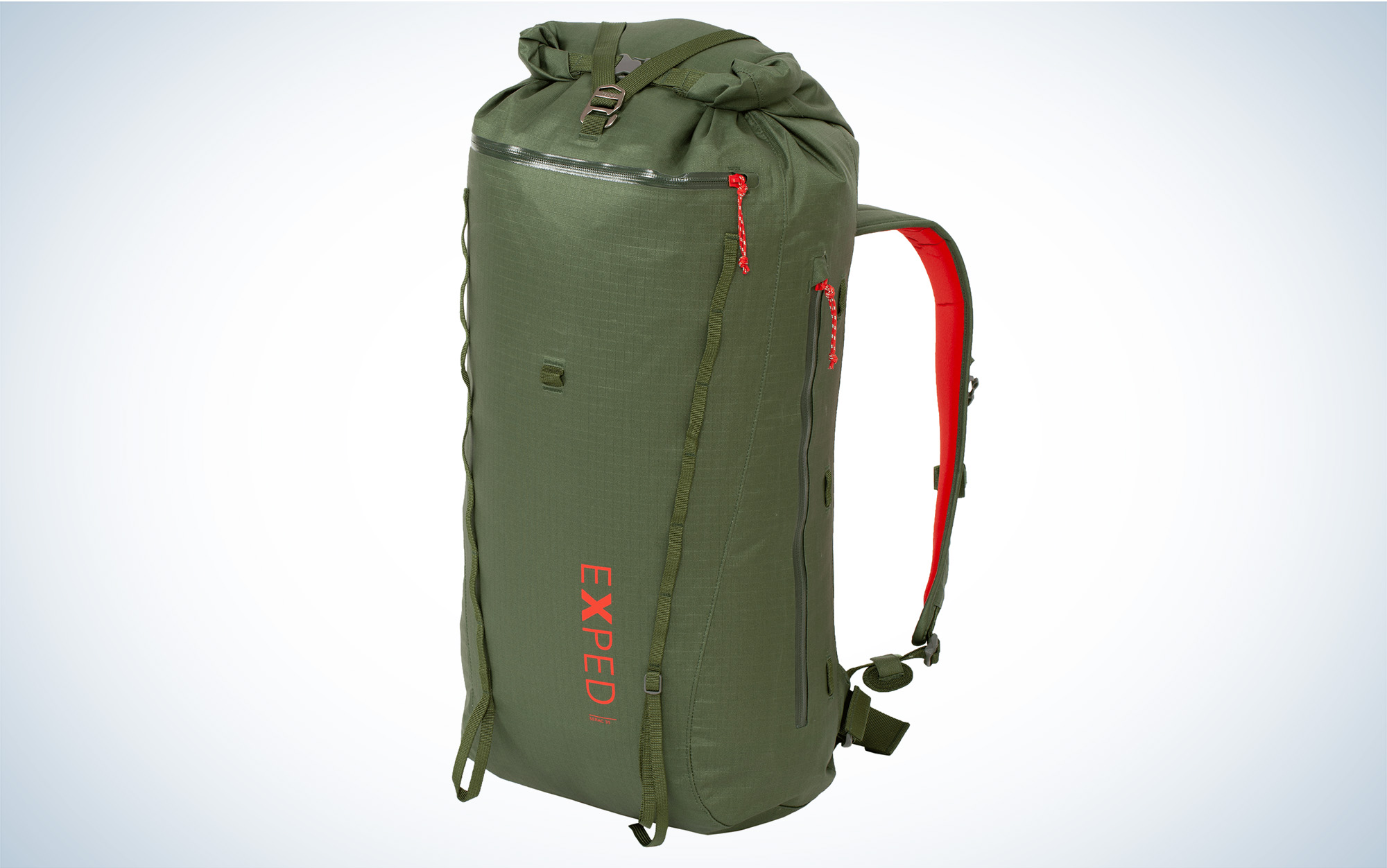We may earn revenue from the products available on this page and participate in affiliate programs. Learn More ›
There’s a special kind of misery that comes from using the wrong pack for the job. But if you have a pack that fits you and matches the task, you’ll hardly notice it’s on your back. The Outdoor Life editors have been on both sides of that and we’ve used packs for hunting elk, sheep, moose, grizzlies, mule deer, whitetails, and mountain goats in the past year. With all that hunting we’ve been able to test a wide range of packs and come up with our favorites for each application. Here are picks for the best hunting backpacks from editors and their reviews.
- Best Overall: Stone Glacier Evo 3300
- Quietest: Sitka Fanatic Pack
- Best for Backpack Hunts: Kifaru Dall
- Best Ultralight for Backpack Hunts: Stone Glacier Solo 3600
- Best for Crossbows: Insights Shift
- Best Day Pack: Kifaru Shape Charge
- Best Day Pack for Women: Stone Glacier Avail 2200
- Best Value: Mystery Ranch Mule
- Best Waterproof: ExPed Serac 35
How We Chose the Best Hunting Backpacks
Outdoor Life editors hunt throughout the country each fall for a variety of species. We used that collective experience to choose packs that work well for specific types of hunting. Each pack was evaluated for its comfort, features, build quality and capabilities.
How to Fit a Hunting Backpack
The first step in choosing the best hunting pack is to think about how much gear you need to carry. For a backcountry elk hunter, that can mean a tent, food, sleeping bag, a bow or rifle, and a frame that can haul 100 pounds of meat. For a whitetail hunter, the best hunting pack might be a daypack that carries lunch, scents, and a few extra layers for the long sit. Many packs feature specialized holders for a rifle or a bow.
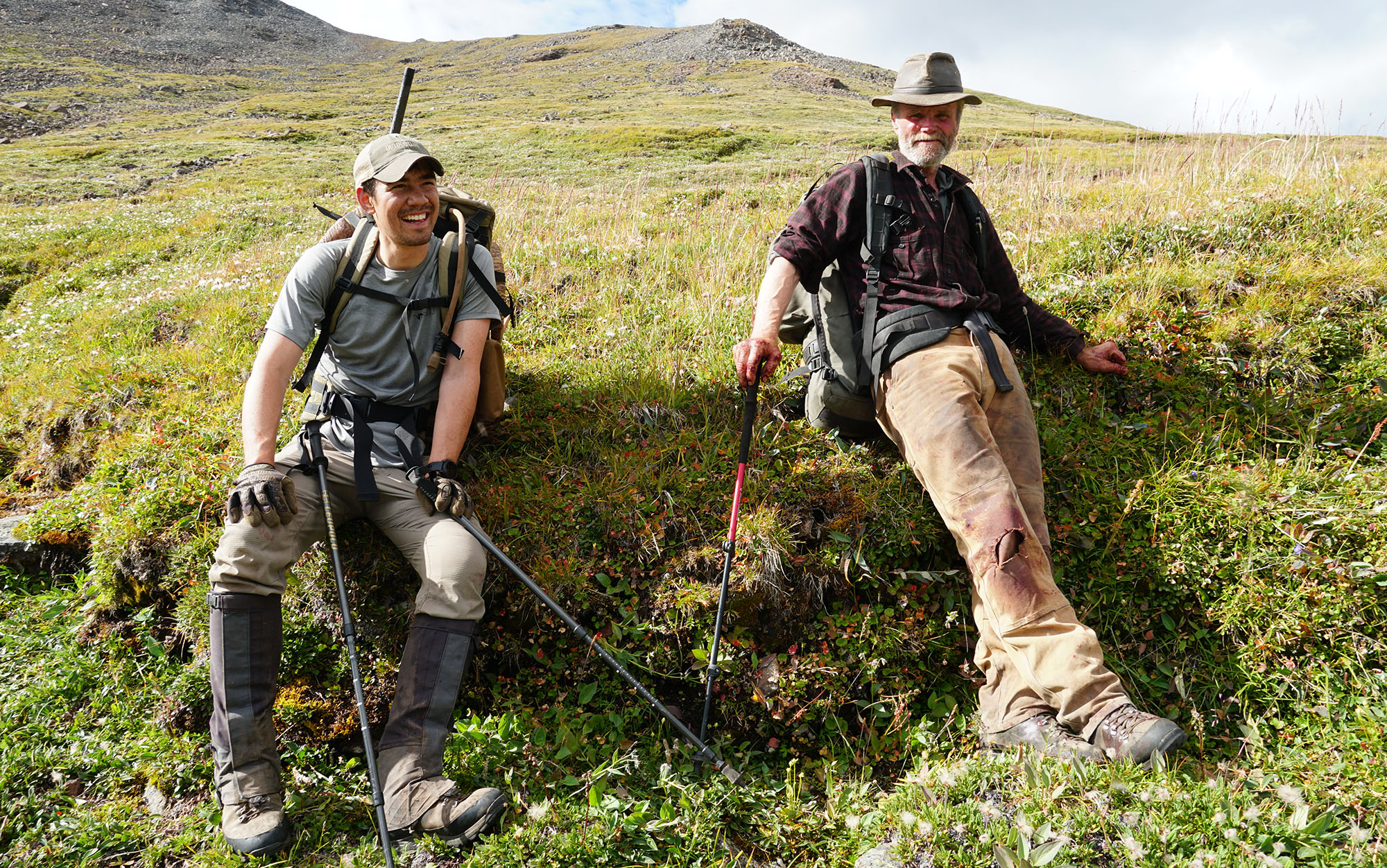
After you choose a pack that will fit all of your gear, be sure it fits you. First, measure your torso length. Put your hands on your hips with the top of your hands touching the top of your iliac crest—your hip bones—with your thumbs pointing toward one another across your back. Measure from that imaginary line between your thumbs to the prominent bump in your spine at the base of your neck. That distance is your torso height. Some packs come in sizes, others can be adjusted to your torso size.
Once the pack fits, adjust the straps. Put some weight into the pack so it sits on your back as it will when you use it. Loosen all the straps. Fasten the belt first. The padded portion of the belt should hug your iliac crest when you snug the belt around your waist. Adjust the shoulder straps so there is no gapping between the strap and your shoulder.
Best Hunting Backpacks: Reviews & Recommendations
Best Overall: Stone Glacier Evo 3300
Key Features
- Capacity: 3,300 cubic inch main bag
- Weight: 3 pounds 13 ounces on Krux Evo Frame
- 150+ pound load rating
- 2,500+ cubic inch expandable load shelf
- Cordura 500D and Xpac fabric
- Made in the USA
- Price: $614
Pros
- Versatile for day hunts or short overnight hunts
- Load shelf design allows you to pack out big critters comfortably
Cons
- Not fit for extended hunts in the backcountry
If Goldilocks was a diehard big game hunter, the Evo 3300 would be her backpack. It’s not too big when used as a daypack. It’s not too small to haul out hefty elk quarters. In other words, it’s just right. The key to the versatility of this hunting pack is its load shelf design. When it’s time to pack out quarters, you simply loosen the straps that hold the bag to the frame. Then, in the gap between the bag and frame you can slide your gamebag full of all the meat that your legs can carry. There are a variety of additional straps to secure the load. This design keeps the weight close to your frame and body, which is key for comfortably packing out heavy loads. It will also keep your camp (sleeping bag, clothes, etc.) from getting bloody on the hike out.
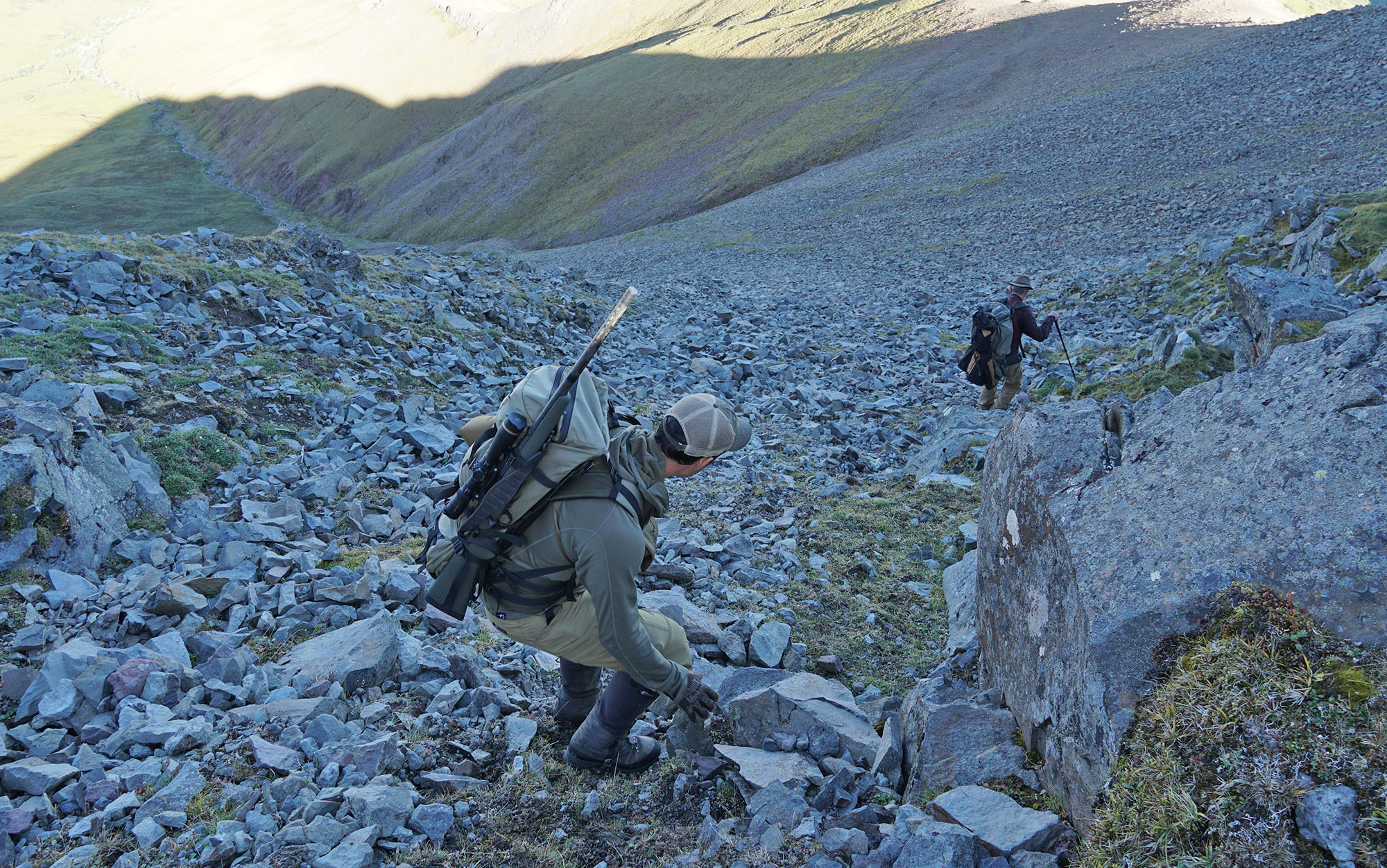
I used the Evo 3300 during a dall sheep hunt in the Yukon last fall and it worked perfectly as a daypack. When I killed a ram, I had no problem packing out my third of the sheep (my guide and wrangler had the rest). I also used the pack for a two night hunt for mountain goats in Utah. This was a solo hunt, so I had to carry everything I would need on my back. I had no problem fitting the following items in the Evo 3300:
- Stone glacier tent
- Sleeping bag
- Sleeping pad
- Rain gear
- Hydration bladder and filter
- Spotting scope
- Food for three days
- Garmin InReach
I figured any other gear would just slow me down. When I killed a billy, I used the load shelf to pack him down the mountain in two trips. I estimate that the max weight I had in the pack was about 70 pounds and it rode comfortably even in rugged terrain. If you’re tougher than I am and are set on loading your pack well north of 100 pounds, or if you plan on hunting for a week or longer out of your pack, then this model is probably a bit small for your needs. But for everyone else, this is the best hunting backpack. –Alex Robinson
Quietest: Sitka Fanatic Pack
Key Features
- Capacity: 2,166 total cubic inches
- Berber fleece material
- Silent closure system
- Designed to hang while open
- Price: $209
Pros
- Ultra quiet
- Lots of pockets for hunting accessories
- Big enough for all-day sits
Cons
- Flimsy body
- Spendy
For deer hunters who care about staying quiet in the stand, ripping open a noisy zipper (or worse, velcro) on a backpack feels like a sin. Sitka designed its Fanatic Pack for hunters like us. The backpack is made of berber fleece and it utilizes a clever strap/latch system instead of noisy buckles or zippers. There are three zippers on the pack, but they’re for optional secondary pockets, not the main ones. The backpack is also designed so that there’s a handle loop inside the pack, meaning that you can hang it with the top open. So when you need to reach for a rangefinder (or sandwich) there’s no fussing with straps or lids. There are a ton of little pockets on the inside and within the lid so that each of your gear items has its own spot (no rattling against other items while you’re hiking in). It is, by far, the quietest hunting backpack I’ve ever used.
The only downside to the pack is that its body is a little flimsy. There is no frame and the berber fleece material easily collapses on itself. Because of this, the lid doesn’t completely secure (there are little gaps in the side). This isn’t a problem for treestand hunters, because we’re not typically laying the pack on the ground in the field. However, I wouldn’t use the Fanatic as a daypack for hunting from the ground. –Alex Robinson
Best for Backpack Hunts: Kifaru Dall
Key Features
- Capacity: 7,080 cubic inches
- Weight: 6 pounds, 2 ounces on Duplex Lite Frame
- Can host three additional external pouches
- Built-in load shelf
- Cordura 500 and Xpac fabric
- Made in the USA
- Price: $800 with Duplex Lite frame
Pros
- Light and durable material
- Versatile and can host additional pouches and lids
- Large enough for 10- to 14-day trips
- Comfortable with heavy loads
Cons
- Bag and frame sold separately
- Takes some time and use to fine-tune fit
For mountain hunters who spend a week or two at a time in pursuit of sheep, goats, or high-country deer, the backpack is a central piece of gear. It needs to be reasonably light, very durable, and big enough to haul hunting and camping gear and food for extended trips. Equally important, the pack needs to carry standard loads and heavy loads of meat comfortably. You get all of that with the Kifaru Dall.
Paired with the Duplex Lite frame, the Dall is an excellent and versatile bag that can be packed with 14 days-worth of gear and food, but can be cinched down for use as a day pack in the field. The Dall’s design is simple, with a fold-over lid. It’s compatible with Kifaru’s guide lids and additional pouches on the back and belt—something I highly recommend. There are two open-top pouches on either side, and side compression straps for holding a rifle. It’s got an integral load shelf for hauling extra meat or gear between the bag and the frame, too. I’ve been using the predecessor to this pack on the duplex frame for years in the mountains of Alaska, and you’ll be hard-pressed to find a pack that’s as durable and comfortable under heavy loads. –Tyler Freel
Best Ultralight for Backpack Hunts: Stone Glacier Solo 3600
Key Features
- Capacity: 3,600 cubic inch main bag
- Weight: 4 pounds, 6 ounces on X Curve Frame
- 150+ pound load rating
- 2,500+ cubic inch expandable load shelf
- Cordura 500 and Xpac fabric
- Made in the USA
- Price: $655
Pros
- Lightweight yet able to handle heavy packouts
- Comfortable to wear on multi-day hunts
Cons
- A little pricey
- In an effort to keep weight down it doesn’t have many pockets and pouches
I’ve been hunting with Stone Glacier packs for years and haven’t found a system that does a better job balancing light weight with load-hauling capability. A few seasons back I upgraded my old Stone Glacier pack, which was actually a prototype made by Stone Glacier founder Kurt Racicot, to the Solo. I’ve used it to haul deer, elk, and moose out of the mountains and it has been with me everywhere from Africa to Mongolia. (It fits in overhead bins as a carry-on, which is a nice bonus.)
As with all Stone Glacier packs built on either the XFrame or Krux Evo—you can read about the differences here—it includes an integral load shelf that allows you to strap meat between the frame and 3,600-cubic-inch bag. There are plenty of compression straps on the pack so that you can get a tight fit that snugs the load against you back—where you want it—and prevents it from moving around. The frame is easy to fit to different body sizes and you can purchase the Solo with a variety of belt lengths.
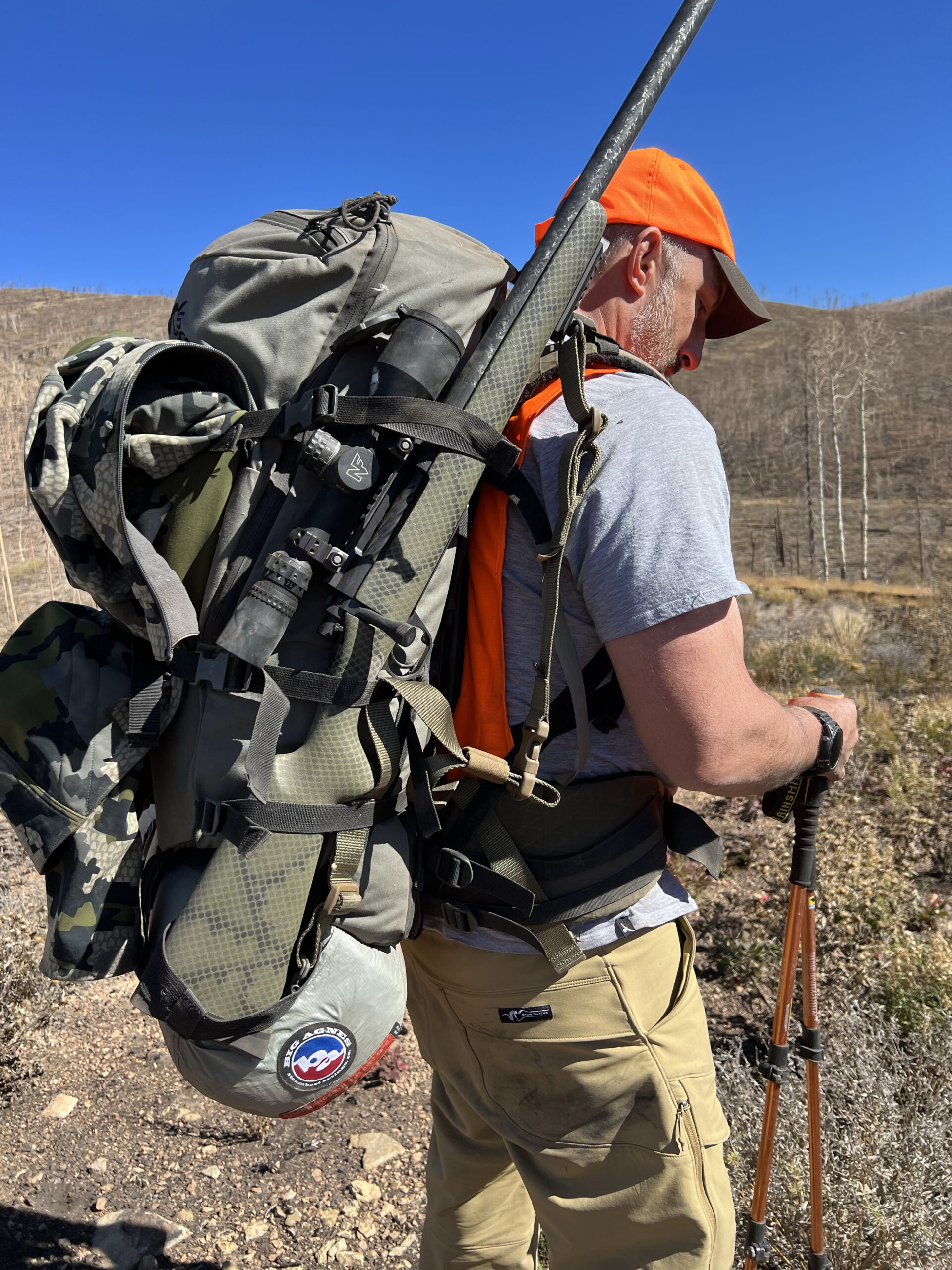
One of the smart design features on the Solo is how the zipper to the main compartment makes an upside down U-shape. This gives good access to the main bag, but in case the zipper fails the bag can still be used by cinching the compression straps across the bag. The way the straps are configured allows the user to easily secure a rifle, tripod, or trekking poles to the outside (I’ve done all three) where they are secure and easy to access.
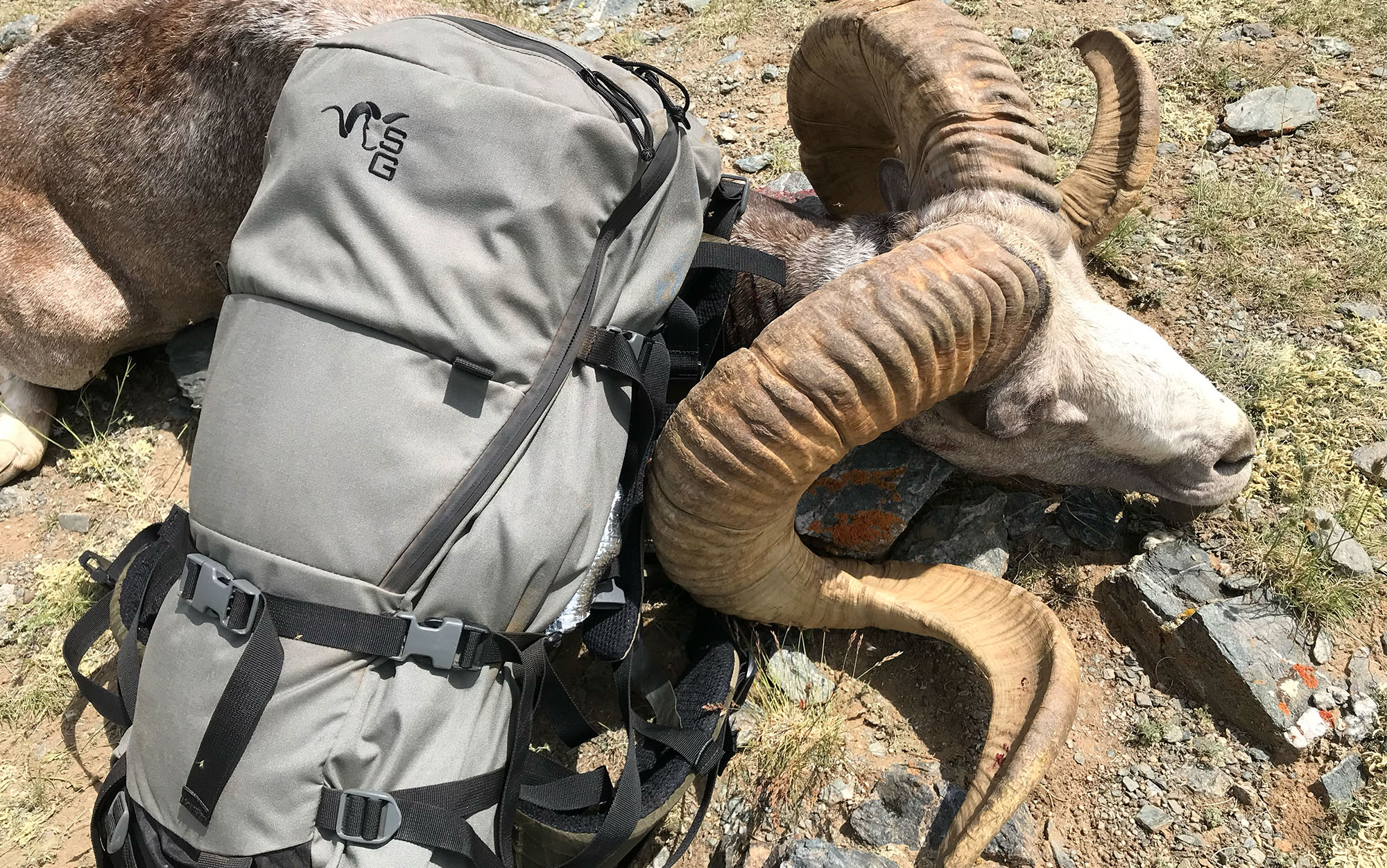
The Solo has a decent sized pocket on the top of the bag that you can stuff your lunch and an extra layer of clothing in for easy access. The interior of the main compartment has a sleeve where you can stow a spotting scope or water bottle. Stone Glacier also sell lightweight pockets and sleeves that can be hung on the inside of the main compartment to help keep gear organized.
I’m sure that someday someone might invent a better ultralight pack for mountain hunting, but right now the Stone Glacier Solo is the best hunting backpack for mountain hunts. —John B. Snow
Best for Crossbows: Insights Shift
Key Features
- Carries rifles, crossbows, or climbing sticks
- Hydration bladder compatible
- MOLLE attachment locations
- Tree stand shelf and basket system
- Price: $220
Pros
- Great storage
- Features for treestand hunters
Cons
- Not ideal for heavy loads (hang and hunt)
This is my go-to pack for a preset stand. I can carry my food, water, bow hanger, camera gear, layers, and archery equipment in this pack. That load rides comfortably on the padded shoulder straps and waist belt. You could also use this pack for saddle hunting if you wore your saddle in and used the passthrough slot to carry your sticks. But, that passthrough is meant for carrying a rifle or crossbow. It works really well for compact crossbows, but large and heavy crossbows you’re better off carrying in your hand.
My favorite thing about this Shift is the gear organization. The front of the pack has a lid that flips out, for you to keep all the stuff you need in the stand. I use it for binos, an extra release aid, snacks, wind checker, and a grunt tube. The fold out panel makes it easy to have those items quick at hand so you don’t have to dig through the pack to find them. –Scott Einsmann
Best Daypack: Kifaru Shape Charge
Key Features
- Weight: 3 pounds, 15 ounces
- Volume: 1,960 cubic inches
- 500d DWR coated fabric
- Made in the USA
- Large main compartment with mesh internal pockets.
- Two water bottle pockets
- Lid with two quick access pockets
- Molle panel for adding accessories and pouches
- Price: $360
Pros
- Durable
- Comfortable
- Versatile
- The perfect amount of pockets
Cons
- Price
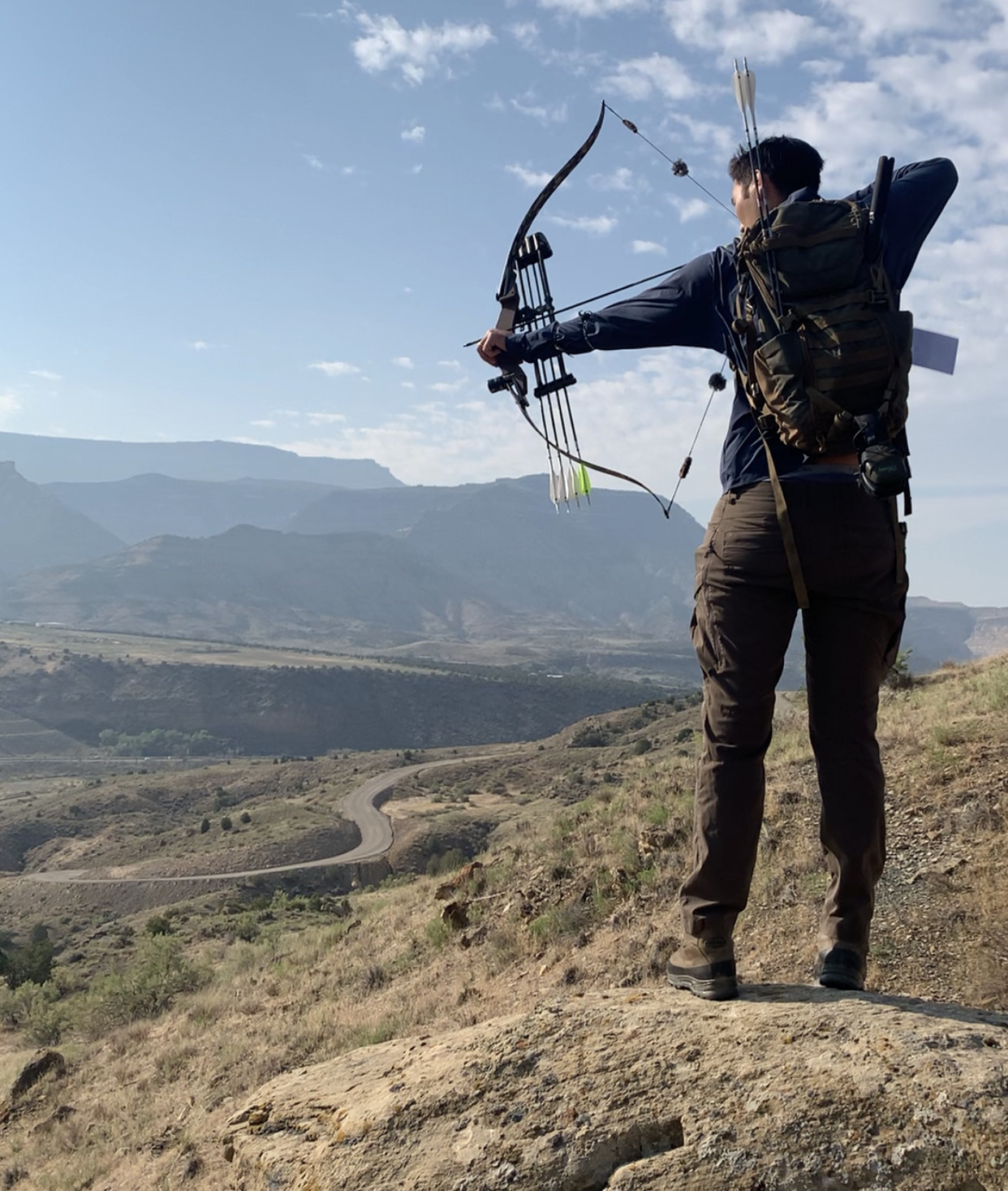
Most of my hunting requires a daypack for carrying layers, water, food, and gear. Within the daypack category you’ll find everything from tiny hip packs to backs around 2,500 cubic inches. I find myself reaching for packs around the 2,000 cubic inch range most often because they allow me to carry a day’s worth of gear. In my embarrassingly large collection of daypacks the Shape Charge is the clear winner and I use it almost excessively for nearly everything. Here are the roles it fills for me:
- Treestand pack
- Carry-on
- Camera bag
- Fishing backpack
- Range bag
The pack is easy to organize with just the right amount of pockets for quick access items and mesh internal pockets that make it easy for you to find what you need in the large main chamber. I’ve added exterior pouches to the molle for more storage when necessary as well as Kifaru’s Grab-IT for strapping down treestands and saddle platforms. The Grab-IT also works well as a meat shelf. As you can see, it’s easy to configure the Shape Charge from streamlined to a fully-kitted gear hauler.
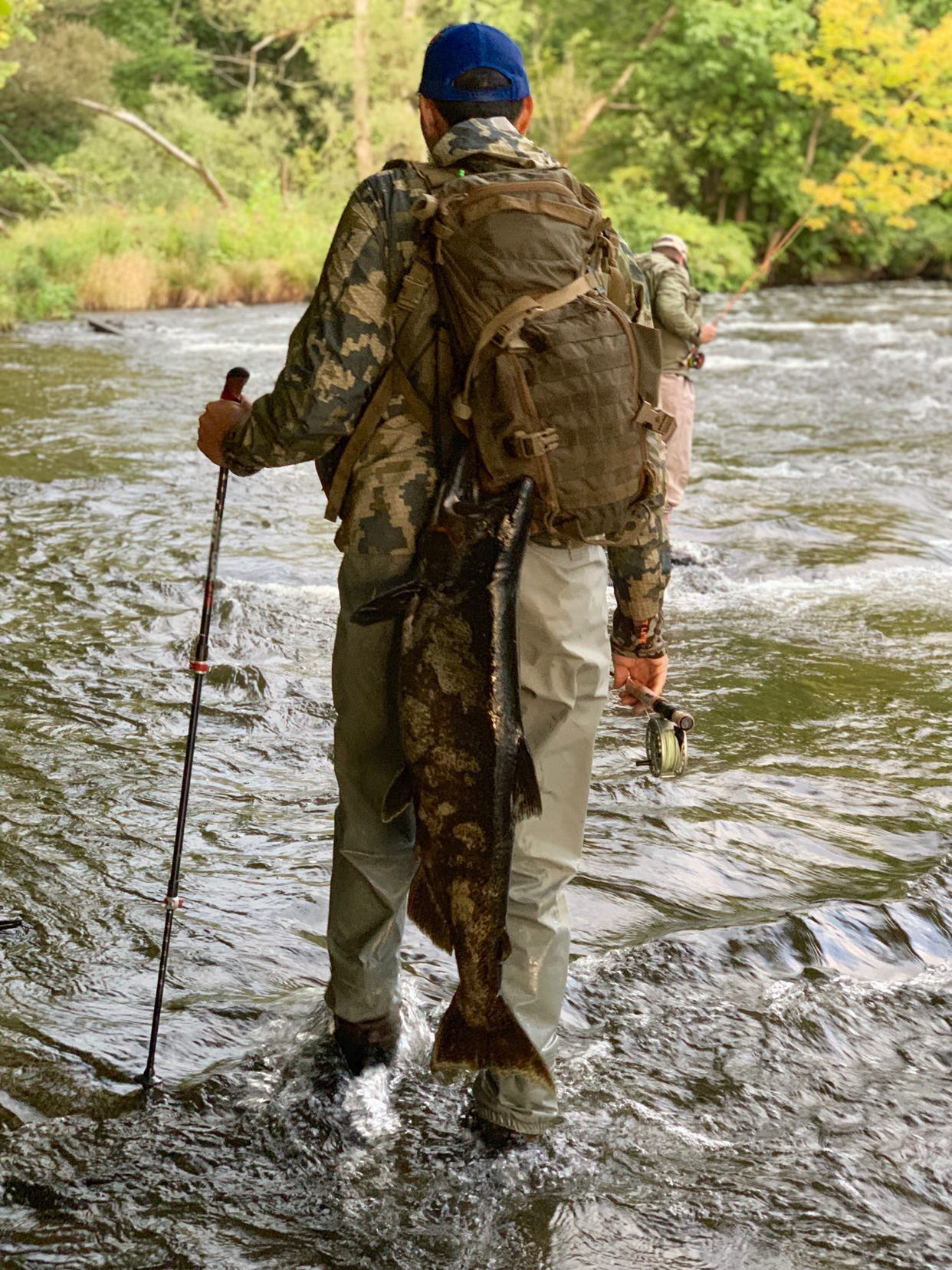
The ultralight crowd will say 500d is overkill for a daypack, but I say this is daypack that will last a lifetime of hard use. Ultimately, it’s up to you decide if a 4-pound daypack is too heavy or if the heavy-duty construction is what you’re looking for. The main con is the price. It’s not a cheap pack, but if you are investing in it as a tool you’ll have for many seasons, rather than buying a cheaper bag every other year, the price becomes a little more reasonable. It’s also made in the USA from US-made materials, which adds to the price and the value. –Scott Einsmann
Best Day Pack for Women: Stone Glacier Avail 2200
Key Features
- Capacity: 2,200 cubic-inch main bag
- Weight: 3 pounds, 0.8 ounces
- Cordura 500 and Xpac fabric
- Compatible with all Stone Glacier frames
- Hydration bladder compatible
- Made in the USA
- Price: $299
Pros
- Adjustment capacity
- Wide, cushioned straps and hip belt
- Feather-light but sturdy
Cons
- Stuffed interior pockets can take up lots of space
- Lower interior pocket is tough to access
I tested the Avail 2200 on a Wyoming deer hunt where I stayed in a cabin and took a truck to my hunting spot, so all I needed was enough supplies for the day. I wasn’t carrying any camping gear or concerned about a long-distance packout, but extreme climate variations demanded a lot of extra layers. Pre-dawn temperatures started in the teens but by lunch it was 60 degrees. On the way out I carried a full 3-liter hydration bladder and I hiked back with most of my morning layers in my backpack.
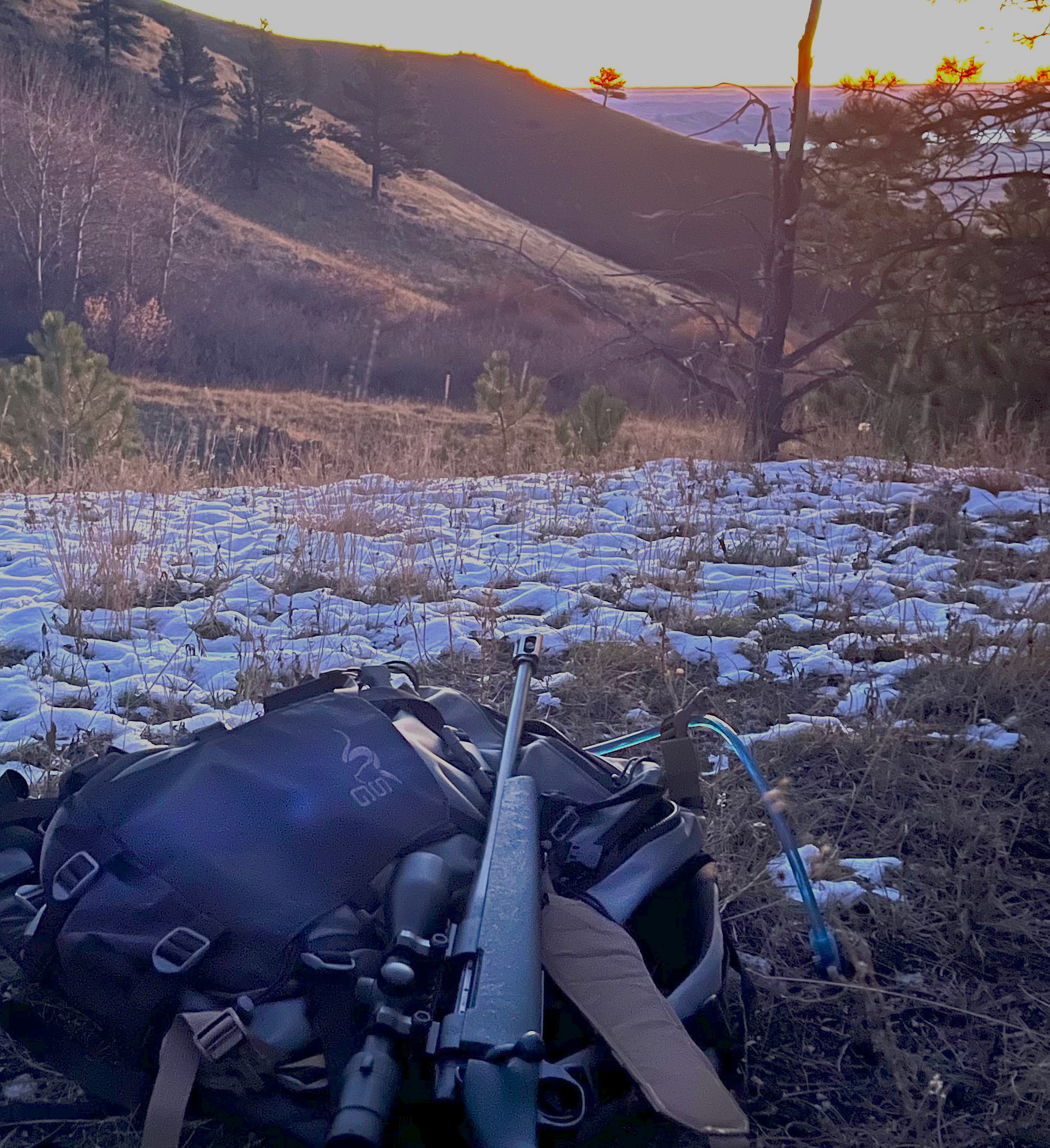
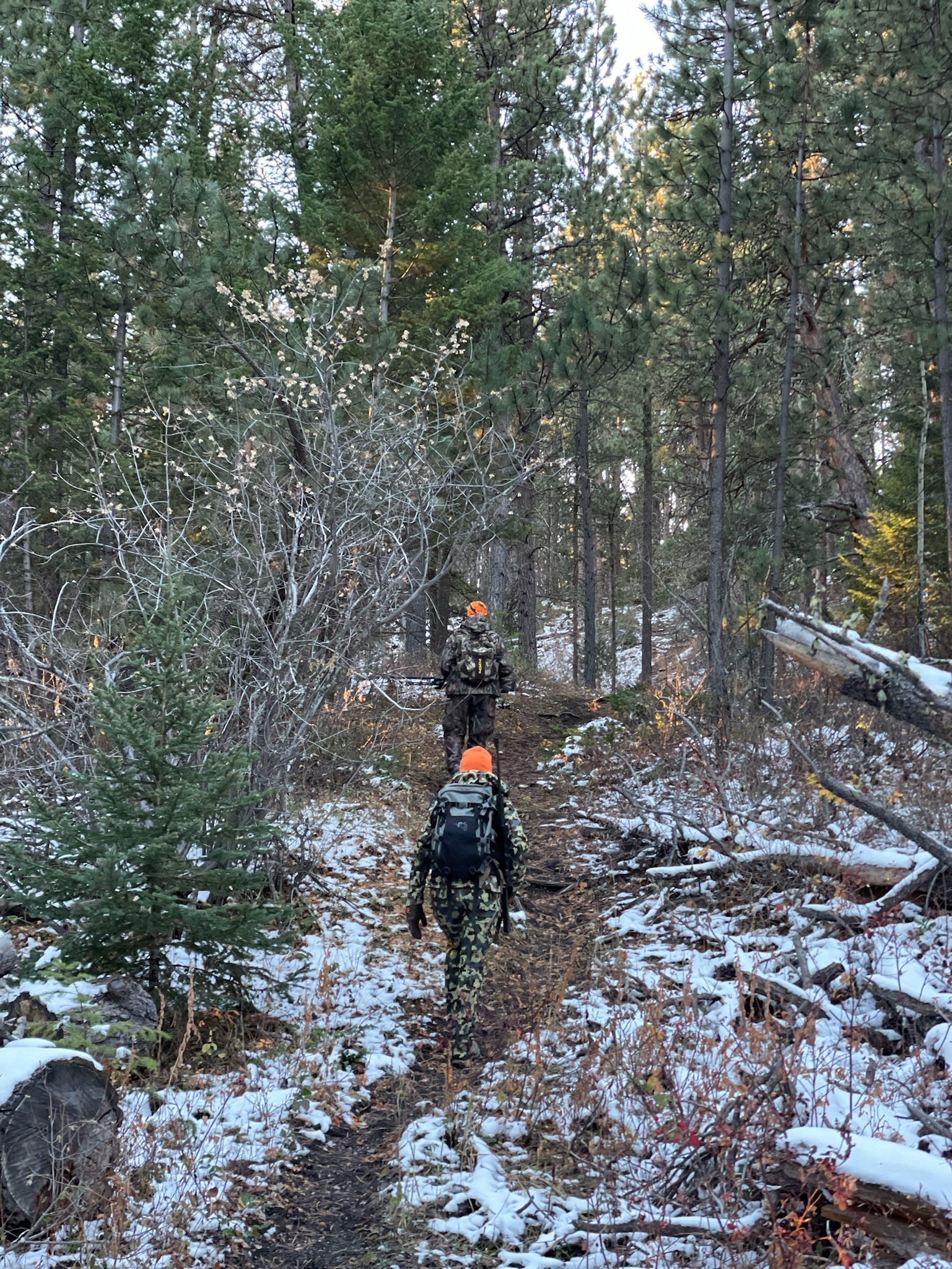
Sometimes daypacks can be overwhelming with pockets and features that crowd the small carrying capacity. The Avail 2200 is not guilty of this. The internal pockets are simple and useful, if a little easy to overstuff. I loved the external compression panel for a jacket. The straps seem excessive at first, especially for a smaller pack, but once I was dialed with the pack, I found myself grateful for the ability to quietly lash down gear without having to open a zipper.
What stood out to me the most about the Avail 2200 is how easy it was to get a perfect fit. With other unisex packs, I end up with a little room between my shoulders and the straps, even after tightening them as much as possible. With the Avail, you can adjust the straps’ attachment points, so it properly accommodated for my short torso. This goes a long way once the bag is loaded up. Usually daypacks are built with a more standardized fit that lacks customization. After all, if you’re only carrying a single day’s worth of gear, does fit really matter? My answer is a resounding yes, and the Avail 2200 is the best hunting backpack for day trips that I’ve tried. –Katie Hill
Best Value: Mystery Ranch Mule
Key Features
- Capacity: 1,405 cubic inches
- Weight: 1.3 pounds
- 500D Lite Plus Cordura
- Top-zip access to main compartment
- Small zippered pocket on face of bag
- Hydration reservoir compatible
- Bow and rifle carry via bottom or side compression straps
- Side pockets
- Price: $149
Pros
- Versatile for day hunts or overnights
- Easily attaches to frame for pack-outs
- Works well as a tree-stand pack
Cons
- Not fit for extended hunts in the backcountry
- Requires purchase of a pack that has a frame like the Beartooth 80 or the Metcalf
As a northeasterner, most of my days afield are spent sitting in a treestand for hours on end. I’ve had plenty of packs that were fine, but when I began hunting deep into public-land and had to pack out my first deer, I realized just how important a quality frame pack can be. Putting on miles hunting mule deer out west finally convinced me to invest in the Beartooth 80, built on the Guide Light MT Frame. For day trips, I switch out the massive 80-liter Beartooth for the 23-liter Mule.
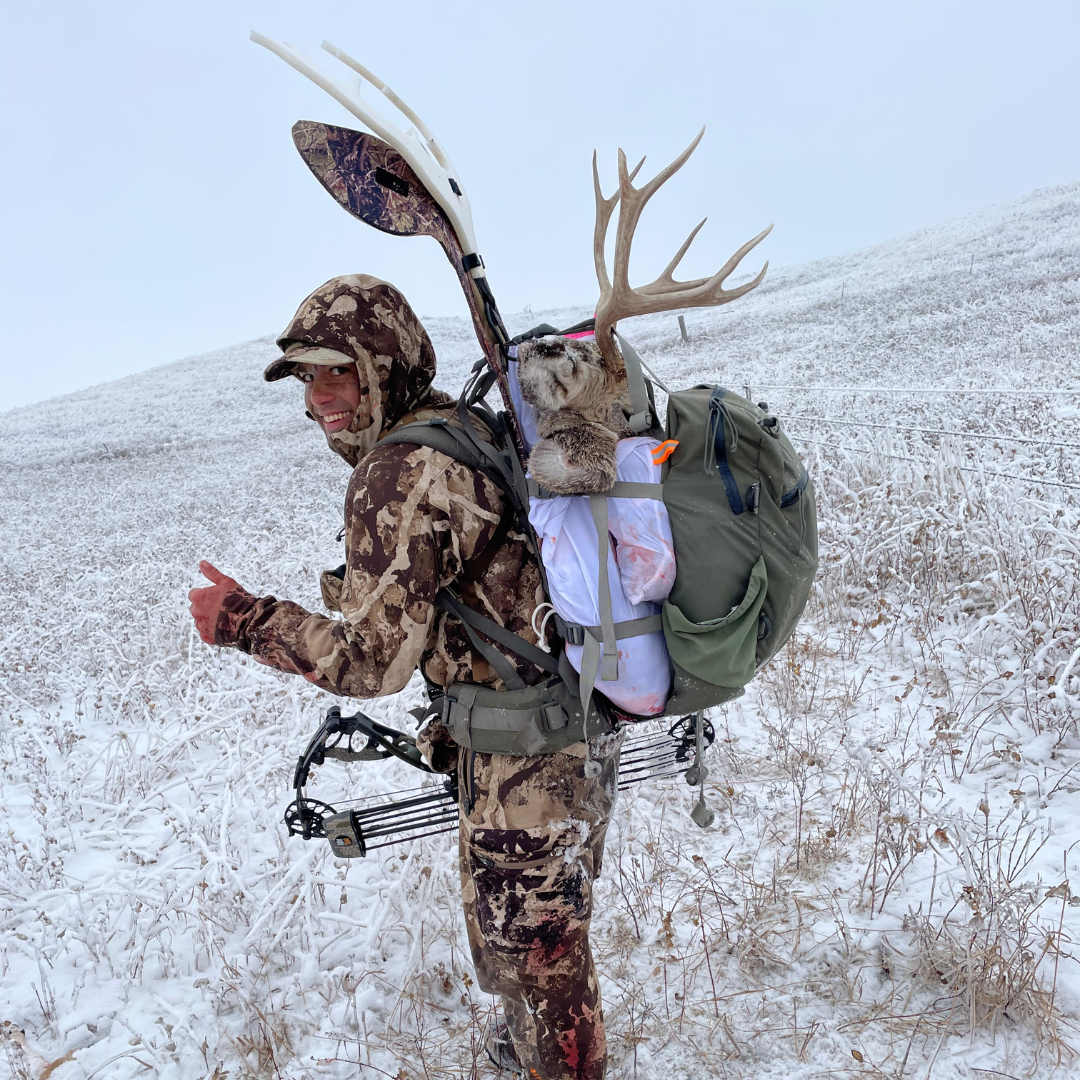
The Mule easily attaches to the Guide Light MT Frame and is perfect for packing everything I need for the treestand or hunting from the ground. I can put knives, game bags, tags, and a butchering kit in the main pocket while reserving the smaller front pocket for grunt tubes, doe bleats, dude wipes, bow hangers, and snacks. The side or bottom compression straps allow you to carry a bow or rifle on your back. The side pockets are also great for a water bottle or tripod.
When I took this pack to South Dakota last fall on a mule deer hunt, I had everything I needed to fill my tag. Thanks to the load-hauling Overload sling, packing out the meat was a breeze compared to years past. You’re able to wedge your stand, game bags full of meat, or overnight kit in between the frame and the pack thanks to generous straps and the ability to add length if necessary. The 500D Lite Plus Cordura fabric and heavy-duty hardware is durable and water resistant to increase this bag’s reliability and lifespan. —Derek Horner
Best Waterproof: ExPed Serac 35
Key Features
- Capacity: 35 liters or 2,136 cubic inches
- Materials: PFC-free waterproof rip-stop Nylon with a water column of 10,000 mm, taped seams, and weatherproof zippers ward off moisture and snow
- Weight: 1 pound, 13 ounces
- Sizes: S, M, L
- Side zipper for easy access
- Water column of 10,000 mm
- Price: $250
Pros
- Weatherproof main compartment with roll-top closure
- White interior for quick overview of contents
Cons
- No hipbelt pockets
- Not hydration system compatible
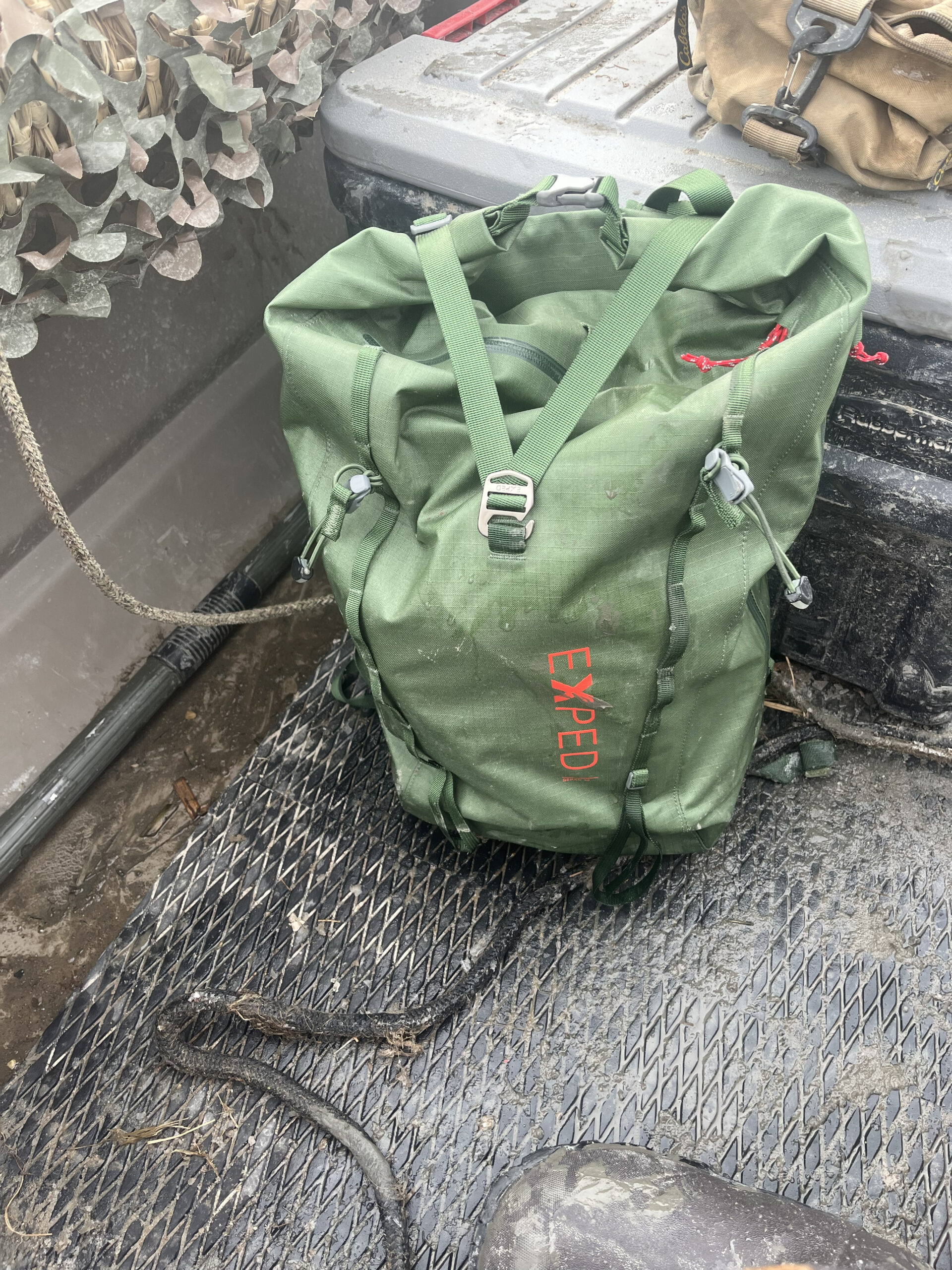
The main draw of this backpack is that it is almost a dry bag. The side zippered access into the spacious main compartment is the only reason it isn’t technically waterproof when submerged. But aside from a prolonged full dip, your gear is going to stay dry in this bag. The Serac has a weatherproof front zippered pocket for quick access to essential gear and. Its minimalist design features two daisy chains on the back for any equipment you might need. I took this bag duck hunting where it sat in wet, muddy, and freezing conditions with no consequences.
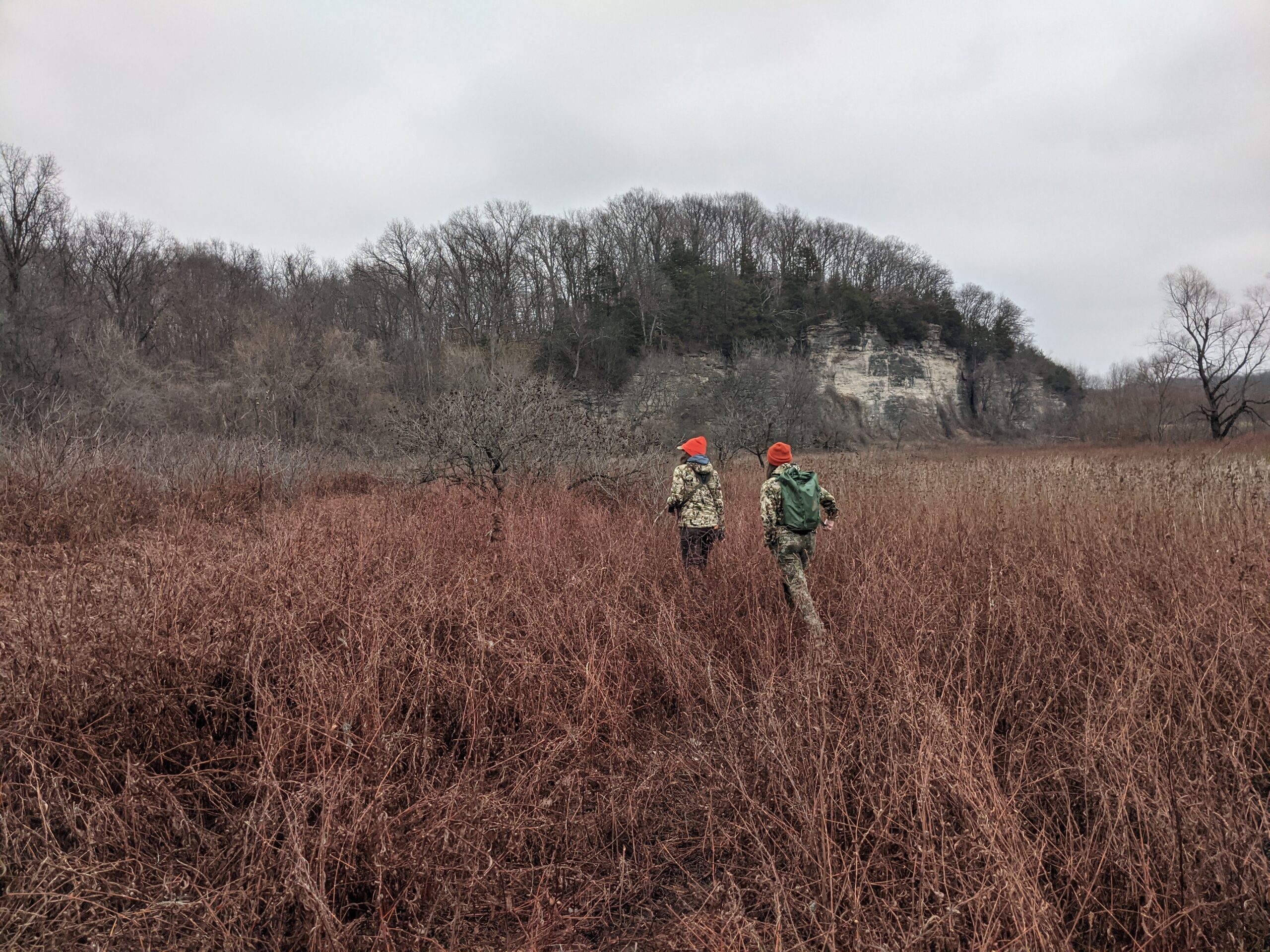
The material is durable and I thoroughly abused it scouting for deer and traveling. This bag can also accommodate technical gear for mountaineering, climbing, or skiing thanks to its weatherproofing, slim profile, and lightly padded back. There is a removable hip belt with no padding or pockets that connects via two sleek metal “buckles” that don’t actually engage but simply slip through each other. This decreases the risk of snow or ice freezing into a plastic buckle and causing issues. –Ashley Thess
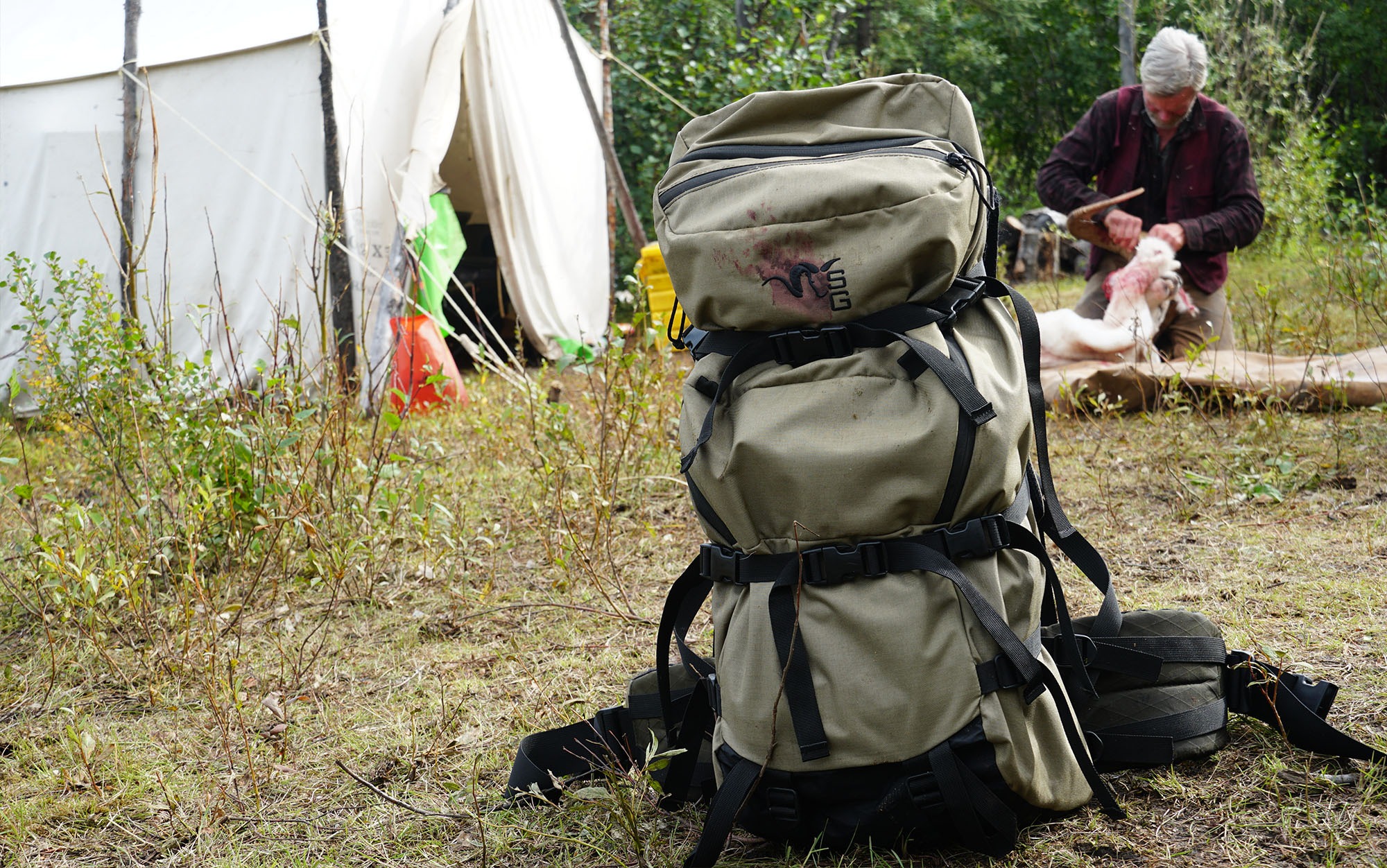
FAQs
First, your pack has to carry all the gear you need. Figure 1,800 to 2,000 cubic inches is enough for a daypack, 3,000-5,000 for a weekend or three day hunt, and up to 7,500 for a longer trip. Be sure the pockets are arranged for the way you use a pack. Some backcountry hunters obsess over every ounce of weight in their gear, so compare weights. Also look at the materials: Internal frame packs won’t snag on brush, although external frames are handier for packing out meat. Finally, a pack has to fit. Measure your torso and be sure the pack adjusts or comes in the right size or you will be miserable carrying any load at all.
No matter how you hunt elk or where, all elk hunts have one common denominator: The possibility of packing out 300 pounds of bone-in meat. Many packs have extension straps that let you carry meat between the pack and the frame. It’s also doubly important that the pack fits well, because you will be loading up with as much as 100 pounds at a time.
Why Trust Outdoor Life?
Since 1898, OL has been a leading authority in testing and reviewing hunting gear, fishing tackle, guns and shooting equipment, and much more. We have more than a century-long history of evaluating products, and we’re now bringing that expertise to online reviews. Our editors are experienced outdoorsmen and women, and most importantly, we’re trained journalists. We prioritize field testing and objective data when reviewing products. We conduct interviews with gear manufacturers and engineers as well as outdoor experts so that our readers have an understanding of how and why a product works—or doesn’t.
Advertising does not influence our gear reviews and it never will. While we always focus our coverage on standout products—because we want our readers to be aware of the latest and greatest gear—we also cover the flaws and quirks of any given product.
Final Thoughts on Hunting Backpacks
A backpack that doesn’t fit you, or is too small or too large, can ruin your hunt. A pack is a tool. It has to carry your hunting gear in a way that keeps it organized and lets you access it when you need it. Size is the next main consideration. Be sure to get a pack that holds all your gear with a weight to durability and features ratio that works for you. If you’re packing in a long way, and opt for useful features like gun or bow holders in the best hunting backpack for you.
- Best for Short Overnights: Stone Glacier Evo 3300
- Quietest: Sitka Fanatic Pack
- Best for Backpack Hunts: Kifaru Dall
- Best Ultralight for Backpack Hunts: Stone Glacier Solo 3600
- Best Day Pack: Kifaru Shape Charge
- Best Day Pack for Women: Stone Glacier Avail 2200
- Best Waterproof: ExPed Serac 35
